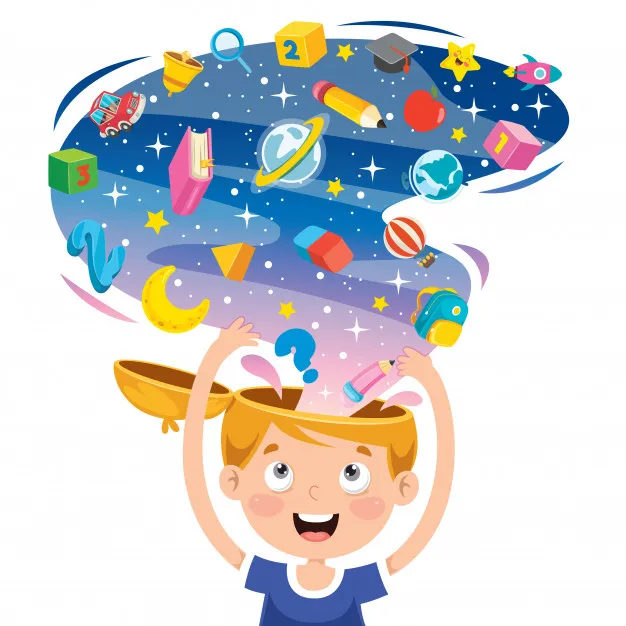Los procesos de ciencias, abarcan un conjunto de elementos que ayuden a comprender lo que ocurre en nuestro entorno y en nuestra vida misma, para así poder tener una mejor concepción del mundo que nos rodea.
Tomando en consideración que el ser humano posee la capacidad de observar, describir, analizar e interpretar la información obtenida, entonces podemos destacar la importancia que tiene la creatividad en la adquisición y conformación del conocimiento, por parte de los estudiantes, y así poder contribuir al mejoramiento del proceso de aprendizaje.
Necesitamos educar en la creatividad a niños y jóvenes, fomentando la observación y descripción de la realidad como fuente de información, para así poder darles nuevas respuestas, puesto que ya no hay respuestas correctas ni apuestas formativas que valgan para toda la vida. Necesitamos personas con competencias sólidas que les permitan aprender y desaprender, para volver a aprender, necesitamos educar hombres y mujeres que desde su fortaleza interior sepan adaptarse a un entorno cambiante; con nuevos retos y nuevas tecnologías, en los cuales los sistemas informáticos desempeñan un papel importante e intervienen en mayor medida en los procesos de formación, se necesita pues, personas creativas.
Y qué hace que una escuela sea creativa?
Para ello se requiere de educadores creativos, en un entorno que se propicie el trabajo coherente en equipo, es necesario potenciar la capacidad creadora e interpretativa en los alumnos, educar de manera integral.
Aprender del error en ciencias o matemáticas, es una herramienta potentísima de aprendizaje significativo y relevante. Valorar el progreso de la creatividad de cada niño, darle pautas, y orientaciones para ser más creativo: para observar mejor, para hacerse mejores preguntas, en la búsqueda de una mejor respuesta.
Ser creativos no es una cualidad innata y fija, se deben educar niños y niñas más creativos a fin de construir un entorno y una sociedad mejor, aprovechar todas las oportunidades en el patio, en casa, jugando, leyendo en donde se encuentre. Cuando favorecemos la observación creativa de la realidad, provocamos las buenas preguntas, no cortamos ideas, dejamos tiempo, valoramos el error y favorecemos a los ¿por qué?, es donde es importante el rol de las familias en el proceso educativo. Si estamos hablando de un aprendizaje holístico, la continuidad de los aprendizajes fuera de la escuela es la muy importante.
En los sistemas de educación básica es común que se presente a la ciencia como un cuerpo de conocimientos o una colección de hechos a memorizar. No es indispensable nacer con una predisposición para la creatividad, el acto creativo puede surgir por medio de la apertura y la preparación. Muchas ideas en las mentes de muchos científicos del mundo pueden estar en este momento en un silencioso proceso de incubación, y cuando el destello surja, debemos tener el criterio para verificar hacia donde nos conducirá.
Science processes include a set of elements that help to understand what happens in our environment and in our life itself, in order to have a better conception of the world that surrounds us.
Taking into consideration that the human being has the ability to observe, describe, analyze and interpret the information obtained, then we can highlight the importance of creativity in the acquisition and conformation of knowledge, for part of the students, and thus be able to contribute to the improvement of the learning process.
We need to educate children and young people in creativity, promoting the observation and description of reality as a source of information, in order to give them new answers, since there are no longer correct answers or training bets that are valid for life. We need people with solid competencies that allow them to learn and unlearn. To learn again, we need to educate men and women who, from their inner strength, know how to adapt to a changing environment; With new challenges and new technologies, in which computer systems play an important role and intervene to a greater extent in training processes, creative people are therefore needed.
And what makes a school creative?
This requires creative educators, in an environment that encourages coherent teamwork, it is necessary to enhance the creative and interpretive capacity of students, educate in a comprehensive manner.
Learning from error in science or math is a very powerful tool for meaningful and relevant learning. Assess the progress of each child's creativity, give them guidelines and guidelines to be more creative: to observe better, to ask better questions, in search of a better answer.
Being creative is not an innate and fixed quality, more creative boys and girls must be educated in order to build a better environment and society, take advantage of every opportunity in the yard, at home, playing, reading wherever you are. When we favor the creative observation of reality, we provoke the good questions, we do not cut ideas, we allow time, we value the error and we favor the why? This is where the role of families in the educational process is important. If we are talking about holistic learning, the continuity of learning outside of school is very important.
In basic education systems it is common for science to be presented as a body of knowledge or a collection of facts to be memorized. It is not essential to be born with a predisposition for creativity, the creative act can arise through openness and preparation. Many ideas in the minds of many scientists around the world may at this moment be in a silent incubation process, and when the flash arises, we must have the criteria to verify where it will lead us.

Gracias por su lectura, esperamos que le sea de utilidad.
Imagen tomada de Google.
Traducido por Traductor de Google.